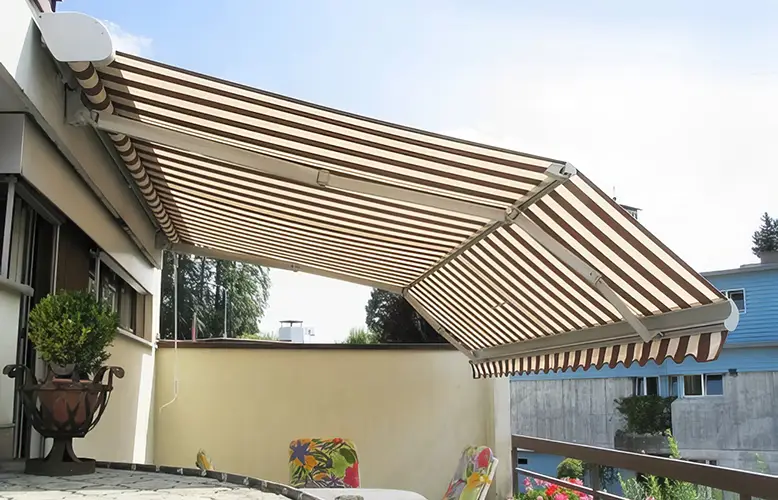The quest for shade in Singapore’s unforgiving tropical climate has made awning Singapore installations an essential element of modern urban architecture. As temperatures continue to climb and the sun’s intensity increases, residents across the island nation are seeking refuge under elegantly designed extensions that offer both practical protection and aesthetic appeal. This quest reflects a deeper transformation in how Singaporeans relate to their outdoor spaces—a transformation worth examining closely.
The Climate Imperative
Singapore’s position just one degree north of the equator creates unique challenges. The punishing combination of heat and humidity makes outdoor living uncomfortable without proper protection. The average temperature hovers around 31°C throughout the year, with intense ultraviolet radiation penetrating even the most carefully designed spaces.
“Singapore’s climate demands thoughtful solutions that can withstand tropical downpours while offering relief from the scorching sun,” notes a veteran architect with over 20 years of experience designing for the local climate.
This environmental reality has catalysed innovation in shade solutions that must be:
- Durable enough to withstand monsoon seasons
- Flexible enough to deploy when needed
- Aesthetically pleasing to complement Singapore’s world-class architecture
- Energy-efficient to reduce cooling costs in adjacent indoor spaces
Evolution of Singapore’s Awning Culture
The transformation of Singapore’s architectural landscape over decades reveals a fascinating progression. Where once simple canvas extensions served basic functional needs, today’s installations represent sophisticated engineering married to design sensibility.
The traditional shophouse awnings that once lined the streets of Chinatown and Kampong Glam have given way to precision-engineered systems. These modern iterations maintain the cultural spirit whilst incorporating materials capable of withstanding tropical conditions for decades rather than seasons.
Engineering Meets Design
Modern awning technology has advanced dramatically, particularly in the realm of retractable systems. The technology behind Singapore retractable awning solutions represents a triumph of engineering that combines durability with convenience.
These systems operate via several mechanisms:
- Motorised systems with weather sensors that automatically retract during high winds
- Manual systems with sophisticated balancing mechanisms
- Hybrid designs that incorporate both solar protection and rainwater management
- Smart-home integrated controls accessible via mobile applications
What makes these systems particularly suited to Singapore’s context is their ability to disappear when not needed. Unlike permanent structures that might compromise the clean lines of contemporary architecture, retractable solutions offer protection only when required.
The Economic Calculus
The investment in quality shade solutions carries significant economic benefits that extend beyond mere comfort. Properties equipped with thoughtfully designed awning systems enjoy substantial advantages:
- Reduced air conditioning costs, often by 25-30% for adjacent indoor spaces
- Protection of furnishings and finishes from UV degradation
- Increased usable square footage of properties
- Enhanced property values through improved aesthetics and functionality
The return on investment typically materialises within 3-5 years through energy savings alone, making these installations increasingly attractive to both residential homeowners and commercial property managers.
Material Innovation
The materials employed in contemporary awning design have evolved dramatically from the canvas and wooden frames of yesteryear. Today’s installations leverage:
- Acrylic fabrics with UV stabilisation that resist fading for 10+ years
- Marine-grade stainless steel components that resist corrosion
- Aluminium framing that provides structural integrity without excessive weight
- Water-repellent treatments that prevent mould and mildew formation
“Singapore’s unique combination of sun, rain, and humidity requires materials that would be over-engineered anywhere else but are absolutely necessary here,” explains a materials specialist from a leading polytechnic institution.
Environmental Considerations
Beyond personal comfort, thoughtfully deployed shade solutions contribute to broader environmental goals. By reducing the heat island effect and lowering energy consumption, these installations align with Singapore’s vision of becoming a more sustainable urban environment.
The Green Mark certification programme increasingly recognises passive cooling strategies, including exterior shade solutions, as valuable contributors to overall building performance. This recognition has accelerated adoption across both public and private sectors.
The Future Landscape
The trajectory of awning technology points toward increasingly integrated systems that respond dynamically to environmental conditions. The next generation will likely incorporate:
- Photovoltaic elements that generate electricity while providing shade
- Advanced fabrics that actively cool through radiative cooling principles
- Automated positioning systems that track the sun’s movement
- Integrated water collection and filtration components
These advancements will further blur the boundary between mere shade structures and intelligent building systems that contribute actively to resource efficiency.
Conclusion
The evolution of shade solutions in Singapore represents more than simple functional improvements—it reflects a deeper cultural shift toward creating livable outdoor spaces in a challenging climate. As urban density increases and private outdoor space becomes more precious, the thoughtful deployment of shading becomes increasingly critical to maintaining quality of life.
For homeowners and businesses alike, the decisions about how to manage sun exposure carry significant implications for comfort, energy efficiency, and property values. The growing sophistication of Singapore retractable awning options ensures that these decisions need not compromise on either functionality or aesthetic appeal.

